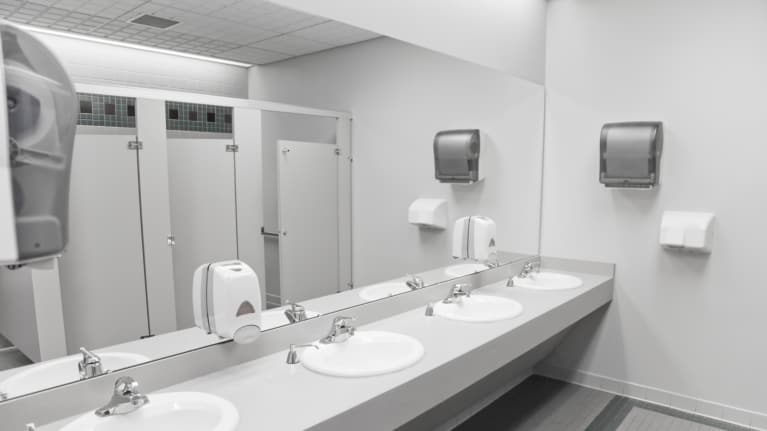A collection of tools and technologies that are used to monitor and maintain the cleanliness as well as the operation of toilet facilities is known as a restroom management system. These systems may consist of a wide number of various components, such as occupancy sensors, soap dispensers, hand dryers, and other fixtures. These components are used to monitor usage, maintain inventory, and prepare for future facility requirements.
A facility may decide to deploy a restroom management system for a number of different reasons, including the following:
- Enhancement of the Customer Experience
A bathroom management system may assist to ensure that toilets are maintained clean and well-stocked, which in turn can improve the overall cleanliness of the facility and the experience that customers have when they visit.
- Increased efficiency
A restroom management system can help to increase the efficiency of the cleaning staff and reduce labor costs by automating many of the routine tasks associated with maintaining restrooms, such as restocking supplies and cleaning. Other benefits include reduced risk of injury to employees and improved safety.
- Better tracking and inventory management
Many bathroom management systems incorporate instruments for tracking and monitoring use, such as occupancy sensors, soap dispensers, and other fixtures fitted with sensors. This allows for better tracking and management of the available inventory. This information may be put to use to improve cleaning schedules, keep track of inventories, and create a strategy for the facility’s future requirements.
- Compliance with regulations
Certain restroom management systems can assist with compliance with regulations, such as monitoring and tracking hand hygiene in healthcare facilities or providing accessibility for people with disabilities. Other systems can help ensure that people with disabilities have access to the restrooms.
- Sustainability
Some restroom management systems may also assist to preserve resources, such as water and energy, by adopting features like low-flow toilets and automated lighting and ventilation systems. This can help to reduce the amount of water and energy wasted in the facility.
Conclusion
In conclusion, the installation of a restroom management system has the potential to deliver a number of advantages to both the facility and the individuals who use it. It has the potential to promote tidiness and efficiency, provide better monitoring and inventory management, improve user experience, help users comply with rules, and contribute to the environment’s long-term health and well-being.
A facility that decides to implement a bathroom management system will, over the course of time, be able to offer a higher level of service to its clientele, enhance the institution’s public image, and reduce its operating expenses. Before deciding on a toilet management system, it is essential to do a thorough analysis of the available choices and take into account the requirements that are unique to the facility.
